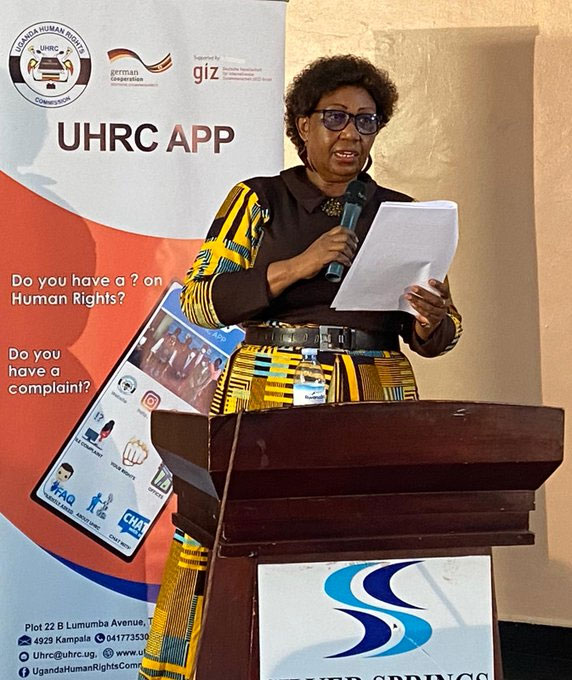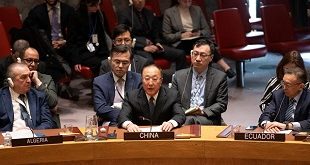
COMMENT | Olivia Nalubwama | The headline that Thursday morning was equivalent to ‘Man Bites Dog.’ Trending across multiple news feeds was the brutal arrest of torture survivors outside the offices of the national human rights institution.
On February 9, five members of the Torture Survivors Movement Uganda attempted to deliver a petition to the Uganda Human Rights Commission (UHRC), demanding the resignation of its chairperson. They accused her of inaction over human rights violations by state actors.
In a Daily Monitor video, the group is shown standing at the locked UHRC gate, pleading with the security officers to let them hand over their petition peacefully. The torture survivors question why a public office like UHRC has closed its gates to them – supposedly the sort of clients UHRC targets.
The Uganda Police Force (UPF) did not disappoint. They showed up quickly, putting a stop to that nonsense of the right of peaceful assembly. Intercepting the torture survivors outside the locked UHRC premises, the police handled the group with that familiar brand of police brutality designed to accentuate the powerlessness of the Ugandan citizenry.
It is baffling how committed the UPF is to ignoring the right of peaceful assembly while constantly displaying their freedom to brutalize Ugandans. If you must publicly protest, wear ironclad armour and underwear because when the police is done throwing you onto the back of their battle-hardened patrol jalopy, your nether regions will no longer be private.
However, if your peaceful assembly is in support of the ruling party or the First Son, do proceed unrepressed as one doing the Lord’s work.
As regularly documented in the UHRC annual reports, the police remain the undisputed abusers of human rights. When executing an arrest, the police seemingly delight in the macabre humiliation of people, stripping them of every ounce
of dignity.
It was a most appalling sight watching the police manhandle, with the callousness of stone-cold granite, the disabled torture survivors. Even more atrocious was the site of this brutality- right at the premises of UHRC, our national human rights defender. UHRC, on their part, remained safely ensconced from the human rights violations unfolding outside their premises.
The UHRC in full – the Uganda Human Rights Commission – is a nice straightforward name. The four words in its name succinctly summarise the core duty of the UHRC. The first word, ‘Uganda’ is not a figment of our collective imagination; we actually exist despite our impassiveness.
The second word, ‘human’ hits the jackpot for Uganda is flush with humans, we are rather prolific at spawning. The third word, ‘rights’ triggers us but yes, the numerous humans in Uganda come with rights. The fourth word, ‘commission’ tells us this is a serious job; some might even refer to it as a calling.
If you are still fuzzy about the work of the UHRC, we should reacquaint ourselves with the origin story of UHRC. The UHRC website kindly elaborates, “The Uganda Human Rights Commission (UHRC) was established under the 1995 Constitution of the Republic of Uganda. The decision to establish a permanent body to monitor the human rights situation in the country was in recognition of Uganda’s violent and turbulent history that had been characterized by arbitrary arrests, detention without trial, torture and brutal repression with impunity on the part of security organs during the pre and post-independence era.”
Four key elements: arbitrary arrests, detention without trial, torture, and brutal repression with impunity on the part of security organs. All four accursed elements manifested during the torture survivors’ attempt to petition UHRC. Yet, the body created to restrain those four elements closed its gates and watched on like a corpse as police brutalized the torture survivors.
In a 2009 comparative report on national human rights bodies in Africa, Chris Maina Peter emphasized that the UHRC, unlike other similar entities, has some teeth. Maina stressed that UHRC, like a court of law, can summon people to appear before it with relevant documentation pertaining to any investigation; it can question any person in line with an investigation; it can direct any person to disclose relevant information; it can commit persons for contempt of its orders. Clearly, UHRC is not your ordinary riff-raff civil society body pandering to the interests of international donors to attract funding.
Despite its teeth, UHRC finds itself floundering like a fish out of water over the increasingly contradictory statements from its chairperson. Notwithstanding her stellar experience as a human rights defender, the UHRC Chairperson Mariam Wangadya has left us wondering just as the torture survivors asked – in whose interests she operates? In one of her more worrisome statements, the Chairperson opined in an NBS TV news program, “If the people on the wrong side of the law don’t trust the Commission, so be it.”
Woe is me. Woe is you. With the blatant impunity ravaging Uganda, anyone is a prime candidate for the ‘wrong side of the law’.
If on that ‘wrong side’ there is no UHRC to stand for us, are we even alive?
*******
 Olivia Nalubwama is a “tayaad Muzukulu, tired of mediocrity and impunity” smugmountain@gmail.com
Olivia Nalubwama is a “tayaad Muzukulu, tired of mediocrity and impunity” smugmountain@gmail.com
THIS ARTICLE FIRST PUBLISHED IN THE OBSERVER
 The Independent Uganda: You get the Truth we Pay the Price
The Independent Uganda: You get the Truth we Pay the Price


